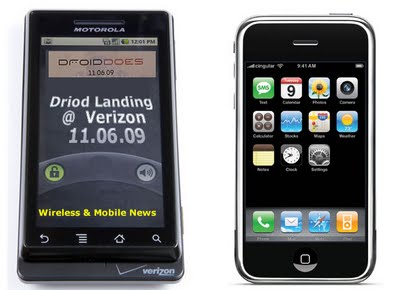Accepting mobile credit card payments can be a game-changer for businesses. It allows you to make sales anywhere, anytime, without needing a bulky machine. With just a mobile credit card reader and a smartphone, you can offer your customers a quick and convenient way to pay. This guide will walk you through everything you need to know, from choosing the right processor to setting up your system and ensuring security.
Key Takeaways
- Mobile credit card payments let you accept payments anywhere using just a phone and a card reader.
- Choosing the right processor involves comparing fees, features, and compatibility with your devices.
- Setting up your system includes downloading payment apps and configuring your card reader.
- Security is crucial; protect both your device and customer data to prevent fraud.
- Maximize benefits by enhancing customer experience and keeping an eye on transaction fees.
Understanding Mobile Credit Card Payments

What Are Mobile Credit Card Payments?
Mobile credit card payments let you accept payments using your phone or tablet. This means you can make sales anywhere, anytime. All you need is a mobile credit card reader and a payment app. These tools make it easy for customers to pay quickly and get on with their day.
How Mobile Credit Card Readers Work
There are three main types of mobile credit card readers:
- Magstripe: These readers let customers swipe their cards. The card’s magnetic stripe holds the payment info, but it’s not encrypted, making it less secure.
- EMV: These readers use chip cards. The chip encrypts the payment info, making it much safer than magstripe. However, it can be a bit slower.
- NFC: Also known as contactless payments, these readers let customers tap their phones or cards. The data is encrypted and changes with each transaction, making it very secure.
Some readers can connect to your phone via Bluetooth, so you don’t need to have your phone right next to you during a transaction.
Benefits of Mobile Credit Card Payments
Using mobile credit card payments offers several benefits:
- Customer Convenience: Customers can pay quickly and easily, which can boost your sales.
- Flexibility: You can accept payments anywhere, whether you’re at a market, a customer’s home, or a pop-up shop.
- Additional Features: Many mobile payment apps let you track inventory and send electronic receipts.
Accepting mobile credit card payments allows your business to make sales anywhere, anytime. This flexibility can be a game-changer for many businesses.
Choosing the Right Mobile Credit Card Processor

When it comes to accepting mobile credit card payments, picking the right processor is crucial. Let’s break down what you need to know.
Factors to Consider When Selecting a Processor
Choosing a credit card processor can be tricky. Here are some key things to think about:
- Fees: Look at both startup costs and ongoing fees. Some processors charge per transaction, while others have monthly fees.
- Compatibility: Make sure the processor works with your mobile device. Most work with iOS and Android, but double-check to avoid surprises.
- Features: Different processors offer different features. Some might lack basic options like capturing a written signature or voiding transactions directly from your device.
Top Mobile Credit Card Processors
There are many options out there, but here are some of the best:
- Square: Known for its ease of use and no monthly fees.
- PayPal Here: Great for businesses that already use PayPal.
- Stripe: Offers a lot of customization options for tech-savvy users.
Comparing Fees and Features
When comparing processors, it’s important to look at both fees and features. Here’s a quick table to help you out:
| Processor | Transaction Fee | Monthly Fee | Key Features |
|---|---|---|---|
| Square | 2.6% + 10¢ | None | Easy setup, no monthly fees |
| PayPal Here | 2.7% | None | Integrates with PayPal account |
| Stripe | 2.9% + 30¢ | None | Highly customizable |
Picking the right processor can make a big difference in how smoothly your business runs. Take your time to compare your options and choose the one that fits your needs best.
By considering these factors and comparing your options, you’ll be well on your way to finding the perfect mobile credit card processor for your business.
Setting Up Your Mobile Credit Card Payment System

Selecting Compatible Mobile Devices
First, you need to make sure your mobile device is compatible with the credit card reader you plan to use. Most card readers connect via Bluetooth or the headphone jack. Check the specifications of your device to ensure it supports these connections. If you’re unsure, consult the manufacturer’s guidelines or customer support.
Downloading and Installing Payment Apps
Next, you’ll need to download the payment app associated with your credit card processor. You can find these apps on the Apple App Store, Google Play, or Windows Phone Store. Once downloaded, follow the on-screen instructions to install and set up the app. In the app, tap “add to wallet” at the bottom of the page and select “new credit or debit card.”
Configuring Your Mobile Credit Card Reader
After installing the app, it’s time to configure your mobile credit card reader. Plug the reader into your device and open the app. The app will guide you through the setup process, which usually includes testing the reader and customizing payment options. For example, you can set up options for tips or prompt customers to enter their email addresses for receipts. Make sure to test the setup before you start accepting payments to avoid any hiccups during transactions.
Security Measures for Mobile Credit Card Payments
When accepting mobile credit card payments, security is crucial. Here are some steps to ensure your transactions are safe and secure.
Ensuring Device Security
Before you start processing payments, make sure your mobile device is secure. This includes installing the latest updates to your operating system and only downloading apps from trusted sources like the Apple App Store or Google Play. During business hours, keep your device locked with a password. If your device is lost or stolen, this will help keep your data safe.
Protecting Customer Data
Protecting your customers’ data is vital. Always use encryption to secure payment information. Avoid storing sensitive data on your device. If your mobile card reader gets hacked, it could damage your business’s reputation. Always work to protect your customer data.
Compliance with Payment Card Industry Standards
To ensure you’re following best practices, comply with Payment Card Industry Data Security Standards (PCI DSS). These standards help protect against data breaches and fraud. Regularly review and update your security measures to stay compliant.
Keeping data secure is a vital but often-overlooked aspect of using mobile credit card readers. If your mobile card reader gets hacked, the ensuing fallout could damage your small business’s reputation.
Maximizing the Benefits of Mobile Credit Card Payments

Enhancing Customer Experience
Accepting mobile credit card payments can greatly improve the customer experience. When customers can pay quickly and easily, they are more likely to complete their purchases. Shorter wait times mean happier customers, and happy customers are more likely to return. Mobile payments also allow for a more flexible checkout process, which can be especially useful during busy times or at events.
Expanding Business Opportunities
Mobile credit card payments can help you expand your business in ways you might not have considered. For example, if you have a fixed location, mobile payments give you the flexibility to try out new venues like food festivals or pop-up shops. This can open up new revenue streams and help you reach a broader audience. Additionally, being able to accept payments on the go can help you close sales more quickly and efficiently.
Monitoring and Managing Transaction Fees
While mobile credit card payments offer many benefits, it’s important to keep an eye on transaction fees. These fees can add up, so it’s crucial to monitor them closely. Consider setting a minimum purchase amount for credit card transactions to help offset these costs. This way, you can ensure that the benefits of accepting mobile payments outweigh the expenses.
By making it easy for customers to pay from anywhere, you can increase sales and grow your business. Just remember to keep an eye on fees and choose a payment processor that offers the best rates and features for your needs.
Troubleshooting Common Issues
Connectivity Problems
One of the most common issues with mobile credit card payments is connectivity problems. If your device can’t connect to the internet, it won’t be able to process payments. Make sure your device has a strong and stable internet connection. If you’re using Wi-Fi, try moving closer to the router or switching to a different network. For cellular data, ensure you have good signal strength. Sometimes, simply restarting your device can resolve connectivity issues.
Reader Malfunctions
Another frequent problem is when the card reader malfunctions. This can happen for various reasons, such as low battery, physical damage, or software glitches. First, check if the reader is charged and properly connected to your device. If it still doesn’t work, try updating the payment app or reinstalling it. Cleaning the card reader with a soft cloth can also help if dirt or debris is causing the issue.
Payment Processing Errors
Payment processing errors can be frustrating for both you and your customers. These errors can occur due to incorrect card information, expired cards, or insufficient funds. Double-check the card details and ensure they are entered correctly. If the problem persists, contact your payment processor for further assistance. They can provide insights into why the transaction failed and how to fix it.
By following these tips, you’ll be processing mobile payments in no time. Your customers – and your bottom line – will undoubtedly thank you.
Conclusion
Accepting mobile credit card payments is a game-changer for businesses of all sizes. It allows you to make sales anywhere, anytime, and provides a convenient payment option for your customers. By following the steps outlined in this guide, you can easily set up mobile credit card processing and start reaping the benefits. Whether you’re a small business owner, a street vendor, or a large retailer, mobile credit card payments can help you increase sales and improve customer satisfaction. Don’t miss out on this opportunity to modernize your payment options and stay competitive in today’s fast-paced market.
Frequently Asked Questions
What are mobile credit card payments?
Mobile credit card payments let you accept credit card payments using a smartphone or tablet. You just need a mobile card reader and a payment app to get started.
How do mobile credit card readers work?
Mobile credit card readers connect to your phone via Bluetooth or headphone jack. When a card is swiped, dipped, or tapped, the reader sends the payment info to the app, which processes the transaction.
What are the benefits of using mobile credit card payments?
Mobile credit card payments offer flexibility, allowing you to accept payments anywhere. They also enhance customer convenience and can help increase sales.
What should I consider when choosing a mobile credit card processor?
Look at factors like fees, ease of use, compatibility with your devices, and the types of payments accepted. Make sure the processor has good customer support too.
How do I set up a mobile credit card payment system?
First, choose a mobile device that’s compatible. Then, download and install a payment app, and connect your mobile card reader. Follow the app’s instructions to configure your settings.
How can I ensure the security of mobile credit card payments?
Keep your device secure by using passwords and updating software regularly. Only download apps from trusted sources and comply with Payment Card Industry (PCI) standards to protect customer data.







